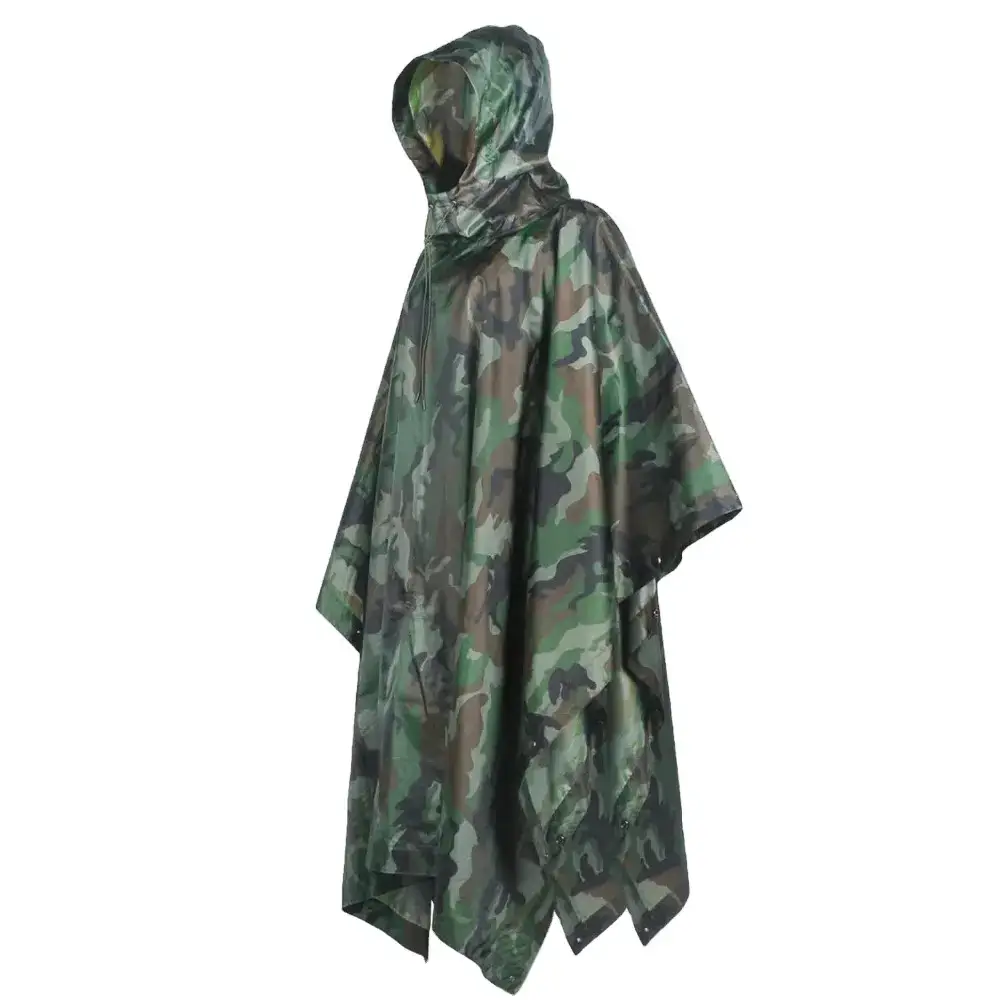Avete sentito parlare del tuta ghillie? Se siete curiosi di sapere cos'è e come si usa, siete nel posto giusto.
This guide covers the essentials of ghillie suits, including their history, components, types, and practical tips for use, maintenance, and customization.
Che cos'è una Ghillie Suit?
A ghillie suit is a camouflage outfit designed to blend the wearer into their surroundings, making them nearly invisible.
The suit consists of a base layer covered in strips of burlap, jute, or other natural materials that mimic the texture and color of specific terrains, such as forests, grasslands, or deserts.
These materials can be dyed or combined with natural elements like leaves and twigs to enhance concealment.
Scopo e usi delle tute Ghillie
The primary purpose of a ghillie suit is to provide effective camouflage in specific environments. This makes it a valuable tool in different activities:
- Caccia: Hunters use them to get closer to their prey without being detected, improving the chances of a successful hunt.
- Fotografia della fauna selvatica: I fotografi utilizzano queste tute per catturare scatti ravvicinati di animali nel loro habitat naturale senza disturbarli.
- Militare Operations: Snipers, reconnaissance units, and special forces use ghillie suits to remain hidden during covert missions in diverse terrains.
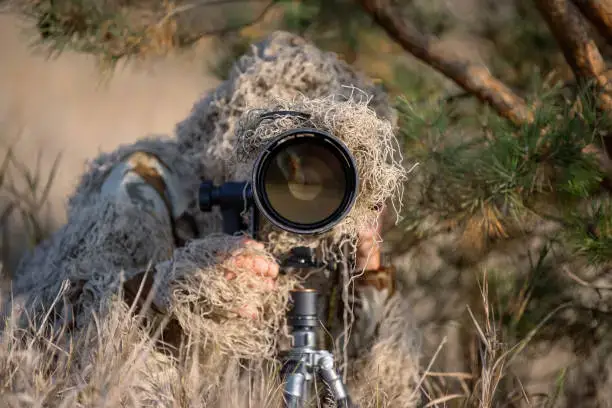
Breve storia delle tute Ghillie
The suit originated in Scotland in the 19th century, where gamekeepers, known as “ghillies,” used them to blend into the landscape while tracking poachers. These early suits were made from burlap and natural materials.
During World War I, British military forces adopted the concept, refining ghillie suits for sniper operations.
Today, ghillie suits are used worldwide by military personnel, hunters, and outdoor enthusiasts.
Learn more about their origins on Wikipedia’s Ghillie Suit page.
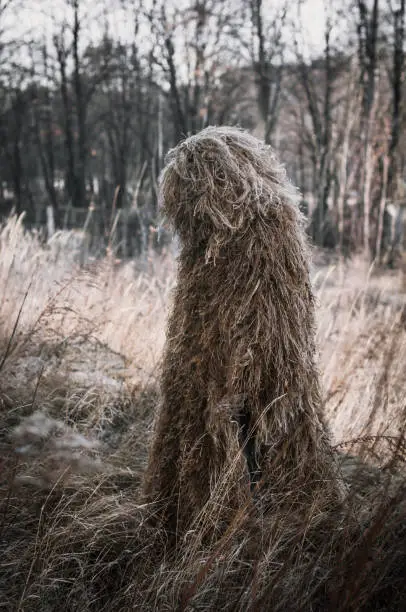
Capire le tute Ghillie
To get the most out of a ghillie suit, understand its components, types, and what factors to consider when choosing one.
Componenti
- Strato base: The foundation of the suit, usually made from lightweight, breathable material for comfort and flexibility, though some suits use heavier materials for durability in rugged conditions.
- Rete: A sturdy mesh attached to the base layer, used to hold the foliage and other materials that provide camouflage. It must withstand rough terrain without tearing.
- Fogliame: Materials like jute, burlap, or synthetic fibers provide the suit’s camouflaged appearance. Synthetic options are increasingly popular for their durability and lighter weight. Some people add real leaves, twigs, and grass to match their environment better.
Tipi
- Tute Ghillie commerciali: Pre-made and available for purchase. They’re convenient but potentially less tailored to specific environments.
- Tute Ghillie fai da te: Custom-made by users to match specific terrains, ideal for those seeking precise camouflage.
- Tute Ghillie specializzate: Designed for unique environments, such as desert, snowy, or urban settings, with materials like waterproof fabrics or modular components.
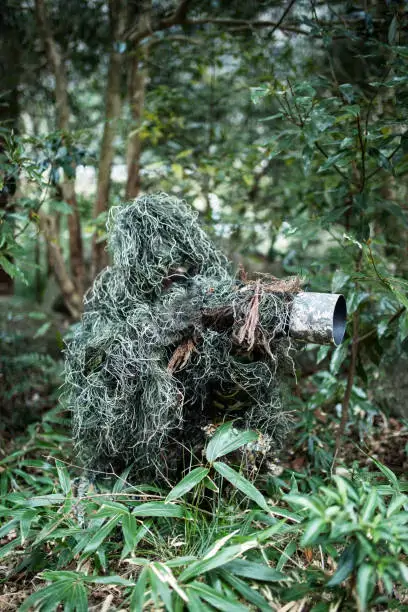
Fattori da considerare nella scelta di una tuta Ghillie
- Attività: L'uso previsto della tuta ne determina il design. Una tuta utilizzata per la caccia può richiedere caratteristiche diverse da una tuta utilizzata per la fotografia naturalistica o per le operazioni militari.
- Ambiente: L'ambiente gioca un ruolo importante nell'efficacia della mimetizzazione. Assicuratevi che il fogliame della tuta corrisponda ai colori e alle trame dell'area in cui verrà utilizzata.
- Comfort: Devono essere abbastanza comodi da essere indossati per lunghi periodi. Pensate a fattori come il peso, la traspirabilità e la facilità di movimento.
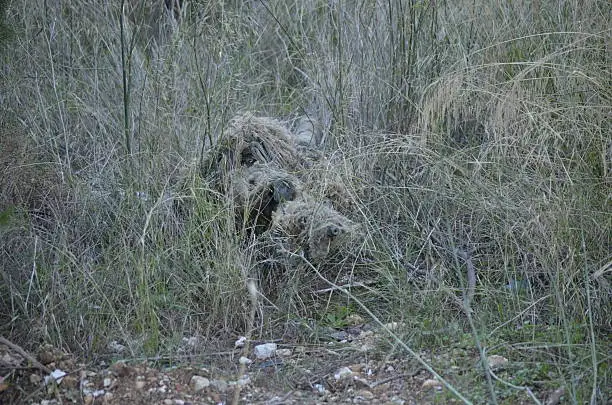
Come indossare una tuta Ghillie
Indossare correttamente una tuta ghillie può fare la differenza tra essere scoperti o rimanere nascosti. Vediamo come ottenere il massimo dalla vostra tuta.
1. Vestibilità e stratificazione adeguate
La tuta da ghillie deve essere allentata sopra i vestiti. Questo permette di muoversi e garantisce che i materiali aggiunti possano spezzare efficacemente la vostra sagoma.
Anche la stratificazione è fondamentale. Iniziate con strati di base traspiranti per evitare il sudore sulla pelle. Questo è particolarmente importante durante i lunghi periodi di utilizzo.
2. Tecniche di mimetizzazione
L'obiettivo principale è quello di mimetizzarsi con l'ambiente circostante. Quando lo indossate, assicuratevi di aggiungere elementi naturali come foglie, ramoscelli e sporcizia della zona in cui vi trovate. Ciò contribuisce a spezzare ulteriormente la silhouette e a creare una fusione perfetta con l'ambiente.
3. Suggerimenti per il movimento e la postura
Anche la migliore mimetizzazione può essere compromessa da movimenti o posture scorrette. Dovete muovervi lentamente e deliberatamente.
Evitate di stare in piedi per non dare nell'occhio.
Piuttosto, accovacciatevi o strisciate per rimanere bassi sul terreno. È importante anche prestare attenzione all'ambiente circostante e muoversi in armonia con gli elementi naturali, come il vento o il fruscio delle foglie.
Manutenzione e cura della tuta Ghillie
Proper care extends the life of your ghillie suit. Here’s how to keep your suit in top condition.
Shake off debris after use and spot-clean with a damp cloth for light soiling. For deeper cleaning, hand-wash with cold water and mild detergent, following manufacturer instructions, as some synthetic materials may tolerate gentle machine washing.
Dry thoroughly before storing in a cool, dry place, preferably in a breathable bag, to prevent mold and mildew.
- Riparazione e manutenzione del fogliame:
Over time, the foliage may become worn or detached. Regularly inspect the suit for damage and replace or repair foliage as needed. Keeping a supply of extra materials on hand will make quick repairs easy.
- Prolungare la durata della tuta:
Avoid exposing the suit to excessive moisture or harsh conditions when possible. Regularly check for wear and tear, and address any issues immediately.
Uso responsabile delle tute Ghillie
It’s important to use ghillie suits responsibly. This means following ethical practices and respecting legal boundaries while enjoying the benefits of camouflage. These suits should only be used for their intended purposes mentioned above, not for any illegal or deceptive actions.
Always make sure that you have the permissions to use them on private or public land, and don’t trespass or disrupt wildlife.
For safety, wear a blaze orange vest in hunting areas with other people present to avoid accidents.
Partner with Us Today
With over 15 years of experience as a produttore di attrezzi tattici, we offer high-quality ghillie suits and other camouflage gear tailored to your needs. From custom designs to bulk orders, we ensure top performance in any environment.
Contact us at our website to explore our product range and request a quote.
Domande frequenti
Are Ghillie Suits Legal for Hunting in My Area?
Regulations vary by region. In the U.S., check with state wildlife agencies or the U.S. Fish and Wildlife Service. Internationally, consult local hunting authorities to ensure compliance, especially on public lands.
How Do I Choose the Right Ghillie Suit for My Terrain?
Select a suit with colors and textures matching your environment (e.g., green jute for woodlands, tan synthetics for deserts). Test the suit in the field and add local vegetation for better blending. Our team can customize suits for specific terrains.
Ghillie suit vs. poncho, what’s the difference?
Ghillie suits can resemble ponchos in some ways, but they are far more complex and functional. Here’s a comparison:
| Caratteristica | Ghillie Suit | Poncho |
| Shape | Loose, full-body covering with strands | Simple, rectangular or circular design |
| Scopo | Camouflage and concealment | Weather protection, basic concealment |
| Materiale | Jute, burlap, or synthetic strands | Waterproof or lightweight fabric |
| Coverage | Covers the entire body, including the head and arms | Primarily torso, sometimes with a hood |
| Design | 3D texture for blending into specific surroundings | Flat, often with minimal patterns |
Some Ghillie suits may have a poncho-like base layer, but the addition of strands and textures sets them apart.
